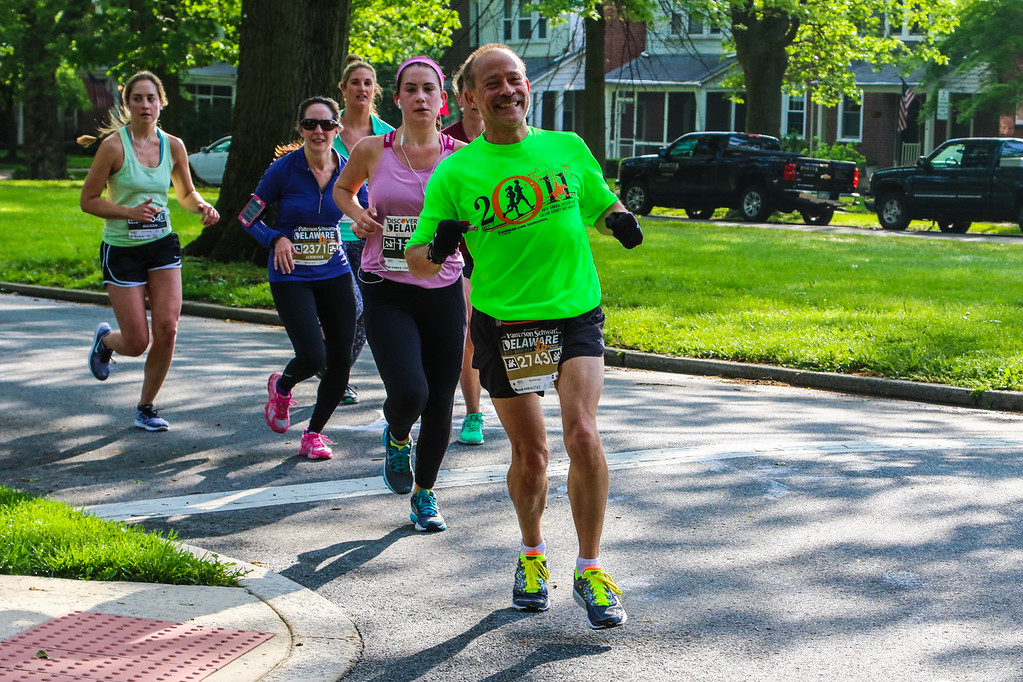It's January.
This is the time of year when two things happen:
- Many people need to learn how to warm up because they are just starting a running program as a New Year’s resolution
- Nobody really minds warming up, because it’s winter and cold out!
But, of course, warmups are necessary year-round.
The Purpose of a Warmup
A good warmup should consist of moving your body to increase your heart rate and respiratory rate and prepares your body for the upcoming activity. A great warmup would consist of moving the actual parts of your body that you are about to exercise. Read on for an enlightening experience I had that taught me how to warm up.
An Example
During the week I usually run at work, during lunchtime. That time works best for me for multiple reasons, and we are fortunate enough to have showers at work, which makes it acceptable to my co-workers. I am also fortunate enough to have an office that adjoins a county park with a 2.6-mile paved running trail as well as wooded trails. Sometimes on “easy run” days, I’ll take an easy run for about a mile and a half to a pull-up bar in the park. I’ll do a few sets of pull-ups and pushups and then finish my easy run around the park and back to the office. The thing is, I noticed that the “easy run” was more difficult after the calisthenics than before. What’s up with that? I’m not an exercise physiologist, but I am a self-proclaimed “perpetual student of all things running.” Here’s my theory.
What's Up With That?
My experience at the pullup bar demonstrates first-hand how working a muscle sends more blood supply to that muscle. It makes sense – muscle activity requires oxygen, and it’s the blood that brings oxygen. Have you ever worked out any muscle and felt that “pumped” feeling? That pumped feeling is, among other things, the extra blood sent to your working muscles. However, a person has a finite supply of blood in their body. So, if there’s “extra” blood pumping up your arm and back muscles after some pullups and pushups, there must be less blood somewhere else! Therefore, if working out other body parts makes running harder, working out your “running body parts” should make running easier. Of course, “harder” and easier” are relative terms.
A Warmup Should Be Specific
Back to the warmup itself. You want a light workout of the muscles you use during running in order to get those muscles prepped for the run. What’s the best way to do that? Running! Of course, your running warmup needs to be “easier” running than your running workout is going to be. Based on your pace, maybe that means walking to warm up. I like to warm up on a continuum, starting really easy and then ramping up to the running workout. And my preferred warmup has changed over time. As I’ve mentioned, I read and study and evaluate new things and if they work, I start using them regularly.
My Warmup
I start my warmup with the “starting stance” from The Sling Method (feel free to go look it up. Tell Paul I sent you.) Then to add some more activity, I stand on one foot doing an exaggerated “running motion” with the leg that’s off the ground”. That means, knee high up in front, cycles through with the foot rubbing the ground on the way back, full follow-through kick. I repeat 20-30 times and then repeat on the other leg. Then I start off my run with 1 to 1.5 miles of very easy running. For reference, my mindless easy pace is about 9:15/mile, and I start off at about 10:00-10:30 per mile. If I am going to be doing speedwork that day, I will add some 0.05 mile stride intervals during the last mile of warmup: 0.05 mile fast, 0.05 mile easy, repeat.
Now Go Do It
That’s it. A good warmup doesn’t need to be complicated. But it does need to precede your workout! Every time. Even if the weather is warm.
